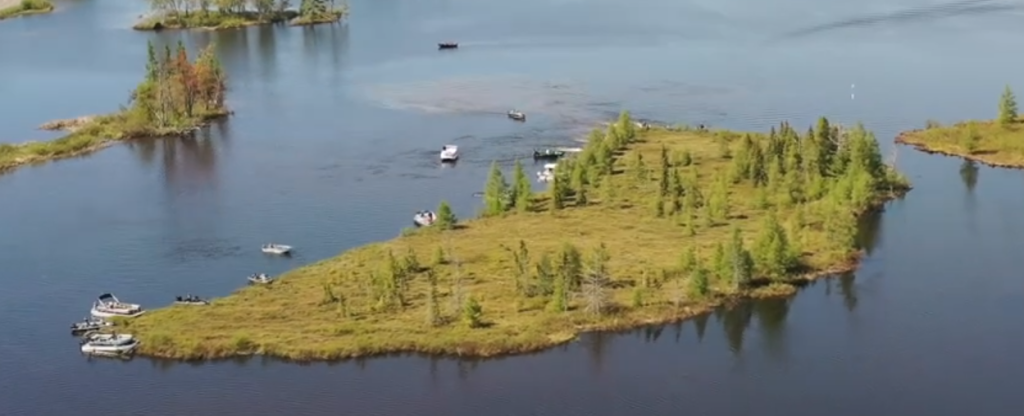The Island That Wouldn’t Stay Put
Typically, when you think of an island, you imagine a dot of land surrounded by a large body of water. And typically — despite being in a river, bay, or sea — they stay roughly where they are.
But not always, as residents of northwest Wisconsin have come to experience. But don’t worry, they have a plan.
Lake Chippewa — also known as the Chippewa Flowage — is an artificial lake about a 90 minute drive from Duluth. (Here’s a map.) Originally a swamp, it was flooded intentionally in 1923, creating the third-largest lake in Wisconsin. When the engineers flooded the swamp, though, something unusual (albeit probably not unexpected) began to happen. The floor of the lake had a lot of decaying plant matter, often called “peat.” Over time, large amounts of peat began to rise to the surface of the lake. Today, throughout the lake’s 14,500 acre footprint, you’ll find hundreds such peat bog islands. But not all of them are tiny mats of dead plants. Some are sizable land masses able to sustain dozens of trees. The largest, seen below, is called the “Forty Acre Bog.”

Most of these bogs aren’t a big deal (pardon the pun), but the Forty Acre Bog can be a problem. As GeoEngineer explains, “Due to high winds, water heights, and growing trees acting as sails, some of these islands often travel around the lake’s surface.” And the one above happens to be pretty close to the bridge that connects the east part of the lake from the west. And when it floats toward that bridge, it puts the bridge at risk.
Breaking the bog up into smaller pieces isn’t an option — as Northern News Now reported, “the fertile soil was the perfect habitat for plants and animals, and soon an entire ecosystem began to thrive on the bog,” and environmental protection laws safeguard that ecosystem from disruption. So instead, whenever the big bog gets too close the bridge, local boaters get involved.
As seen in this video, local boatowners — and there are a lot of them, as the lake attracts people who like to fish — gather at the same time and wedge their boats against the one side of the bog. Then, in a coordinated effort, they gun the engines, pushing the bog away from the bridge. They coordinate their efforts beforehand on a local Facebook page, and are typically able to move the bog well clear of the bridge with about a half hour of effort.
The Forty Acre Bog tends to threaten the bridge around once a year, and in extreme cases, it may take as many as 25 boats to push it away — and sometimes, it takes multiple efforts over a few days to ultimately keep the bridge safe. But locals don’t seem to mind. It’s become something of a tradition: an annual-ish reminder that even a wandering island can bring people together.
Bonus fact: The Brooklyn Nets are a professional basketball team that plays in the NBA. Their nickname is an obvious basketball reference, but they were almost called the Swamp Dragons. From 1977 until they moved to Brooklyn in 2012, they played their home games in northern New Jersey and were known as the New Jersey Nets. And for most of those seasons, they were bad. In the 1990s, the team considered rebranding itself the “New Jersey Swamp Dragons” — the area they played their home games is built on a swamp, and as Billy Paige, their former director of marketing told ESPN, “Everybody likes dragons. Dragons are cool. They always will be.” But league officials weren’t fans of the idea: the team developed a very cartoony logo (seen here on a t-shirt mockup) and the name was insulting to northern Jersey. But the name change went to a vote of the NBA’s owners and passed easily — 26 in favor, one against. So why didn’t the Nets change their name? Because the one “no” vote was from the Nets ownership themselves. As ESPN reported, the Nets owners ultimately got cold feet, worrying that the name change would hurt the team’s brand.
From the Archives: The Swampy Loophole in the Georgia Constitution: Banished to the swamp? Sounds legal.
